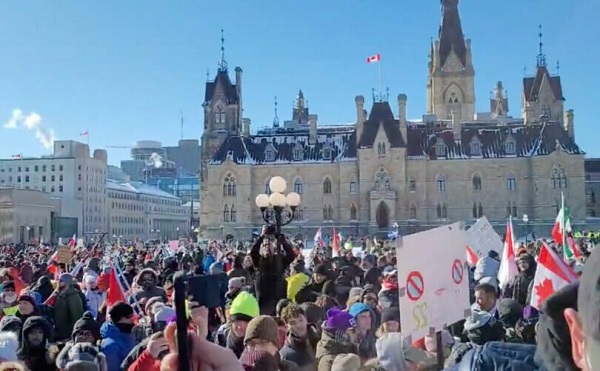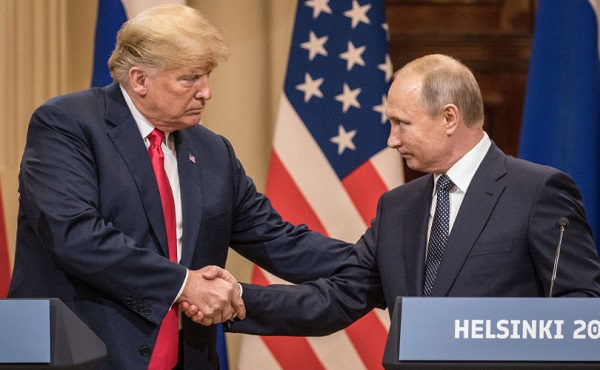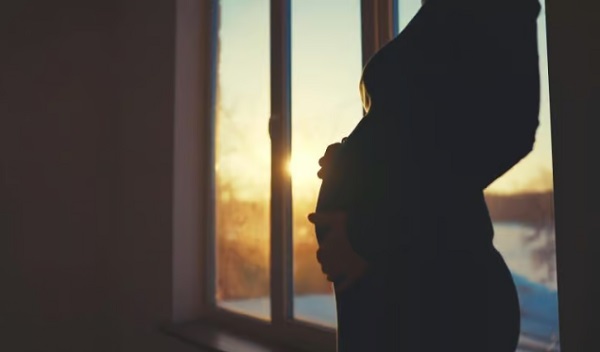COVID-19
Vaccines, Herd Immunity, Vaccine Passports and Fear

Since covid vaccines have become one of the early issues of Canada’s election campaign, this article and the article linked within are worthy of our attention.
Submitted by David Redman.
After a twenty-seven year career as an officer in the Canadian Armed Forces, David Redman engaged with government and the private sector to develop emergency management in Alberta, and throughout North America. His experience in emergency management is extensive with three military tours as a Commanding Officer, responsible for international logistical operations such as the withdrawal of all Canadian personnel from Canadian Forces Europe in Lahr, Germany as well as the deployment of Canadian NATO Forces to Bosnia.
David joined the Government of Alberta in 2000, as a Director of Emergency Management Alberta and in 2001 he was appointed Director of Crisis Management Programs. He was Executive Director of Emergency Management Alberta from 2004 to his retirement at the end of 2005. Since his retirement David has remained active as a respected consultant in emergency management.
Vaccines and the idea of Herd Immunity
Herd immunity does mean different things to different folk.
Scenario “a”. I remember when I was young, before solid vaccines for mumps and measles, parents would hold parties for all the kids in the neighbourhood, if one kid caught them. It was known that measles and mumps could have serious consequences if you were past puberty and caught them, so the idea was to catch them young, ONE AND DONE. If you caught them when young, you never suffered from them again.
Herd immunities mean that if most caught these diseases young, then those who did not have them young, for whatever reason, were better protected. We now have a vaccine, that needs a booster every 10 years, that does what our parents did with parties. But basically, ONE and DONE.
Scenario “b”. Things like the cold, and seasonal flus, just happened, you caught them and got better, sometimes every year. Why? These bugs / viruses transformed a bit each year and so having caught them did nothing, other than perhaps decrease the severity. Herd immunity was never even discussed, because it did not exist for things that evolve like this.
Vaccines in Emergency Management of a Pandemic
From the start of this pandemic, the MOH and Politicians have been talking about the silver bullet of a vaccine. They have always talked about it like it was going to be scenario “a” above. It was implied that “lockdowns” were needed to get us to the silver bullet, and then everything could go back to normal. You know that from the very start I did not support this approach.
I did not believe that a vaccine was a given, as they take years to be safely developed, and SARS CoV-2 was a coronavirus, so a vaccine simply might not be possible (read my April 2020 letter to Kenney)
Lockdowns would not and did not protect those most vulnerable.
Lockdowns do far more collateral damage than any good they may ever do. We knew that. I do not believe they do any measurable good in a country like Canada.
Even if a vaccine did come along to meet scenario “a”, then damage done by “fear” to enforce lockdowns would last a generation. (see my August Letter to the 13 Premiers)
COVID-19 Vaccines – The UK Data
If you have not read the article by Dr Ramesh Thakur, please read it now. He has summarized all the important FACTS coming out of countries around the world on the vaccines and Covid as of August 2021.
https://www.spectator.com.au/2021/08/vaccination-certificates-an-idea-whose-time-must-never-come/
The facts coming out now from the massive data available in the UK show that at best, scenario “b” was always the case. Even with the ‘so-called-vaccines’, the situation is that you still catch, transfer, and may even need to be hospitalized, even when fully vaccinated. That term, “fully vaccinated” will now evolve in a new fear campaign to mean three, four, endless doses, with a mythical advantage from each, if we lockdown long enough.
I define the term ‘so-called-vaccine’ because I, like many perhaps, thought of a vaccine to mean protection like the vaccines we get for measles, mumps, rubella, cholera, etc. Turns out, the manufacturers never claimed these ‘so-called-vaccines’ were like that. But our MOH and Politicians acted like they would be.
The manufacturers said, and are saying again, we told you these ‘so-called-vaccines’ would decrease the effects of the disease once caught, particularly for the most vulnerable, but we told you that they would not stop spread. So now, after 18 months of lockdowns, we must realize that there is no silver bullet and there never was going to be one, and our MOH and Politicians knew, or should have known (Due Diligence), this fact.
So herd immunity in scenario “a” is NOT possible. Scenario “b” is how we will live with the coronavirus, SARS CoV-2.
The ‘so-called-vaccines’ are very good for our seniors, but for no one else. In fact the data now emerging shows that they may even be slightly harmful to those under 50, as they do not stop you catching Covid, but there seems to be a slight increase in negative outcomes if you do catch Covid.
Below is Table 5, out of the United Kingdom, Technical Briefing 20, dated August 6, 2021, by the Public Health Agency of Great Britain. This is part of the evidence quoted by Dr. Ramesh Thakur in his Article, Vaccination certificates – An idea whose time must never come (linked above).
From Dr. Thakur’s article “In the UK, the Delta variant accounts for 99% of all Covid hospitalizations. Of these, 34.9% were fully vaccinated and 55.1% had received at least one dose. Public Health England’s Technical Briefing 20 in early August showed that while vaccination does reduce mortality in the over-50s by more than threefold, for those under 50, the fatality rate among the vaccinated is 57% greater than in the unvaccinated. On 10 August, a panel of experts, including most importantly the head of the Oxford vaccine team, called for an end to mass testing in Britain because the Delta variant has destroyed any chance of herd immunity through vaccination. The scientists believe it’s time to accept there’s no way of stopping the virus spreading through the entire population and monitoring people with mild symptoms is no longer helpful.”

Also from Dr. Thakur’s article:
“The waning efficacy of vaccines is also seen in Israel, including some who have been thrice-jabbed. In a locality in Jerusalem where only 42.9% of the population has been fully vaccinated, 85-90% of all hospitalised patients were fully vaccinated.”
“Because vaccinations do not prevent infection or transmission, they cannot stop the spread of the virus. Because they do reduce the severity of the illness and mortality rates, they remain important. Putting the two together, vaccines should be made available to all, strongly recommended for all vulnerable groups but not made mandatory for anyone.”
The Way Ahead
I have avoided the discussion of herd immunity, as it became a lightning rod very early in this pandemic. It is not part of the discussion about emergency management in a pandemic anyhow.
Protect the most vulnerable, and for the rest
STAY CALM and CARRY ON.
Bruce Dowbiggin
The Covid 19 Disaster: When Do We Get The Apologies?

Breaking: Drs. Bonnie Henry and Theresa Tam have been appointed to the Order of Canada in recognition of their role in the country’s response to the COVID-19 pandemic.
And so the game of covid liar’s poker has more winners. It’s like awarding the captain of the Titanic the Nobel Prize for his work on floatation. As we now know these two— and the other WHO finger puppets in Canada— made the Covid 19 episode worse, not better, with their prescription for panic, positives and punishment. Even as they knew the truth about the limits of the virus and the efficacy of vaccines they continued to spew fallacious PCR data on the extent of the sickness and who was at risk.
Put simply, to protect vulnerable seniors they said kids were also at great risk. Which was unconscionable.
In this they encouraged Justin Trudeau in his worst instincts, combining his father’s insouciant disregard for civil rights (sending in the police) with his mother’s mental stability. Propped up by Team Tam and its U.S. allies such as Anthony Fauci, this hysteria peaked with a sequestered PM crushing the Truckers Convoy’s vaccine protest with emergency measures and destruction of civil liberties.
Lest you wonder, this overreach was recognized at the time. Justice Maclean wrote at the trial of Convoy organizers, “Defendants & other persons remain at liberty to engage in a peaceful, lawful & safe protest”. On Feb. 16, he continued a no-honking order, again writing: “Defendants & other persons remain at liberty to engage in a peaceful, lawful & safe protest.”
The leaders of the Convoy, lynched by Canadian media’s phoney claims of right-wing American interference, are still fighting jail time on charges of nuisance. While violent criminals are routinely released on bail or absolved.
Justice Richard Mosley later concluded that while the convoy was a disruption of public order, it didn’t constitute a national emergency and invoking the act “does not bear the hallmarks of reasonableness — justification, transparency and intelligibility.” But in real time Team Tam made no attempts to correct the wilder misgivings about Covid (lockdowns, mandatory vaccines). Trudeau was given a hall pass. Needless to say the purchased media made things infinitely worse regurgitating these mistakes.
In short, they knew better but hid the truth. But why pick on Henry and Tam? Under Trudeau and his wingman Jagmeet Singh this was the golden age of lies and prevarications in Canada and the U.S. No apologies were ever offered when the truth emerged.
As we’ve noted before, Trudeau cried with a teddy bear carefully positioned over 751 alleged unmarked graves in a known Catholic cemetery that the local Cowessess band abandoned. The Liberal government knew the claim of 215 “children’s graves” was false, and still ran with it to get Trudeau his photo-op. Naturally the CBC Media Party played (and still plays) accomplice in this farce as the Canadian flag was lowered to half-mast for six months and Trudeau ratted out Canada at the UN as a genocidal state.
There were more, plenty more Trudeau scandals that media endorsed and then stood by even as the truth was revealed. SNC Lavalin. We Charity. Arrive Can app. Firing indigenous justice minister. Chinese drug infiltration/ money laundering. Nazi Celebrated in Parliament. Welcome To Canada immigration. Nova Scotia massacre. McKinsey Consultation. Blackface. And so on.
And were there apologies when it came time to make the Trudeau Liberals accountable? No, they staged a media circus over Donald Trump’s assertion of 51st state. All the fake news and deliberate lies went poof, allowing Mark Carney to seamlessly assume the PM job.

Lest We Forget Pt. 2 it was not exclusive to Canada. As we are now learning: Barack Obama and Joe Biden sat in an August 3, 2016 Situation Room briefing and said, yeah, let the highest officials in our administration fabricate evidence to frame the opposing party candidate Donald Trump. Obama. Biden. Comey. McCabe. Strzok. Page. Rice. Etc.
Knowingly using the faked Clinton campaign ‘Steele Dossier’ hoax, they launched a federal investigation into the Trump presidential campaign that lasted three years after Trump was sworn in as the nation’s 45th President. Arresting and jailing his partners and colleagues. Inventing fake stories for their media enablers. Let’s repeat that. Saint Obama knew there was criminal activity in the process but let his henchmen try to fix an election.

And when the ruse was uncovered no one apologized. No one in authority was fired or jailed. The Pulitzer Prizes awarded to the NT Times and Washington Post for disseminating the DEMs scandal were not rescinded. Nor were they given back by the lying newspapers.
The concerted frauds of the same U.S. DOJ, FBI and State Departments were fed by media and accepted by gullible publics in Canada and America. The fantastical 2020 election results were likewise drummed into the public irrespective of the sudden “appearance” of 27 million new votes during a pandemic.
It was all a fitting preamble to the 2020-2024 Biden senility scandal with Democrats running a man they knew was in full dementia. In the 2020 election Biden was hidden from public view, the better to let media attack Trump for spurious charges launched by partisan DNC attorneys in Georgia, New York and DC. Even then it took the suppression of Hunter Biden’s incriminating laptop just prior to the election to get his father elected.

The dance of denial continued in Biden’s term as he physically and mentally deteriorated before the American public. But inquiries about who was running the government if not Biden were harshly suppressed. Media lackeys noted he was sharp as a tack mentally and in tip-top physical condition when he wasn’t falling down stairs.
It took the stunning 2024 debate debacle with Trump to strip away the lies about Biden’s health, now said to be advanced prostate cancer and Parkinson’s. The media, caught in their own lies about Biden’s condition, offered no apologies and tried to blame Biden’s stutter for the performance.. Right.
These were the two greatest U.S. hoaxes from people who’d cried hoax incessantly. They were hardly the only abuse of public trust. Some of the perpetrators are said to now be under investigation— even as they hand out awards to each other. The media’s credibility is shattered and yet they still blame others. Jaded voters are taking a “we’ll see” approach. But expectations of any change in DC or Ottawa are limited.
As Stephen Taylor posted on X: “Turns out for Liberals, ‘elbows up’ just means ‘noses up’ like it always has.”
Bruce Dowbiggin @dowbboy is the editor of Not The Public Broadcaster A two-time winner of the Gemini Award as Canada’s top television sports broadcaster, his new book Deal With It: The Trades That Stunned The NHL And Changed hockey is now available on Amazon. Inexact Science: The Six Most Compelling Draft Years In NHL History, his previous book with his son Evan, was voted the seventh-best professional hockey book of all time by bookauthority.org . His 2004 book Money Players was voted sixth best on the same list, and is available via brucedowbigginbooks.ca.
Freedom Convoy
Court Orders Bank Freezing Records in Freedom Convoy Case

|
A Canadian court has ordered the release of documents that could shed light on how federal authorities and law enforcement worked together to freeze the bank accounts of a protester involved in the Freedom Convoy.
Both the RCMP and TD Bank are now required to provide records related to Evan Blackman, who took part in the 2022 demonstrations and had his accounts frozen despite not being convicted of any crime at the time.
The Justice Centre for Constitutional Freedoms (JCCF) announced the Ontario Court of Justice ruling. The organization is representing Blackman, whose legal team argues that the actions taken against him amounted to a serious abuse of power.
“The freezing of Mr. Blackman’s bank accounts was an extreme overreach on the part of the police and the federal government,” said his lawyer, Chris Fleury. “These records will hopefully reveal exactly how and why Mr. Blackman’s accounts [were] frozen.”
Blackman was arrested during the mass protests in Ottawa, which drew thousands of Canadians opposed to vaccine mandates and other pandemic-era restrictions.
Although he faced charges of mischief and obstructing police, those charges were dismissed in October due to a lack of evidence. Despite this, prosecutors have appealed, and a trial is set to begin on August 14.
At the height of the protests, TD Bank froze three of Blackman’s accounts following government orders issued under the Emergencies Act. Then-Prime Minister Justin Trudeau had invoked the act to grant his government broad powers to disrupt the protest movement, including the unprecedented use of financial institutions to penalize individuals for their support or participation.
In 2024, a Federal Court Justice ruled that Trudeau’s decision to invoke the act had not been justified.
Blackman’s legal team plans to use the newly released records to demonstrate the extent of government intrusion into personal freedoms.
According to the JCCF, this case may be the first in Canada where a criminal trial includes a Charter challenge over the freezing of personal bank accounts under emergency legislation.
|
-

 Business2 days ago
Business2 days agoCBC six-figure salaries soar
-

 Addictions2 days ago
Addictions2 days agoCan addiction be predicted—and prevented?
-

 Addictions2 days ago
Addictions2 days agoMore young men want to restrict pornography: survey
-

 International2 days ago
International2 days agoSupport for the Ukraine war continues because no one elected is actually in charge.
-

 Business2 days ago
Business2 days agoTrump slaps Brazil with tariffs over social media censorship
-

 National2 days ago
National2 days agoHow Long Will Mark Carney’s Post-Election Honeymoon Last? – Michelle Rempel Garner
-

 espionage1 day ago
espionage1 day agoFBI’s Dan Bongino may resign after dispute about Epstein files with Pam Bondi
-

 Brownstone Institute2 days ago
Brownstone Institute2 days agoNet Zero: The Mystery of the Falling Fertility







